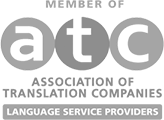The phrases “translation” and “localisation” are often used interchangeably, and it’s normal for marketers and others confused about the differences between the two. Understanding the differences between these similar phrases, procedures, and services benefits you in more ways than one. It also enables you to increase the efficiency and profitability of your website’s reach.
Let’s first clarify the distinction between website translation and localisation services to see how they vary. When you convert original or source language versions of web material, such as videos, text, eBooks, or applications, into a target language, it’s known as website translation.
Localisation Is More than Just Translation
Professional translation services entail transforming your text from one language to another while adhering to grammar and syntactic norms. It’s not a simple word-for-word translation; rather, it’s a multi-step process that considers each language’s standards and guidelines.
On the other hand, localisation entails more than simply recreating the text in a new language. It tailors your message to the needs of local audiences. For example, most languages have local variants and dialects that you need to consider when developing your marketing approach, very much like how the English language differs across the United States, Australia and Britain.
Translators must perform accurate work to ensure that the target language’s message retains the source material’s original meaning. In contrast, localisation entails more than simply recreating the text in a new language. It tailors your message to the needs of local audiences. Websites, mobile applications, software, video games, multimedia material, and voiceovers benefit from localisation.
Localisation Helps Your Brand Appeal to the Local Culture
You must localise your business for each nation in accordance with local culture to globalise it. At the same time, you must maintain a distinct voice for the audience to recognise your brand everywhere in the globe.
For example, Coca-Cola took to localisation to convey a consistent brand message around the globe. To appeal to the Chinese audience, Coca-Cola became “kekou kele”, meaning “delicious happiness”. This way, the brand’s image is maintained while appealing to the local culture in China.
The business enlisted the help of local professionals, who devised a new name and a local marketing plan with the help of a team of experts. They promoted the brand’s image while respecting the local culture, which is very different from the West. A cultural perspective is required for localisation. You don’t just translate your website or app; you alter it such that the local audience believes the material was created just for them.
Localisation Involves More Than Just Text
The processes in localisation are intricate. While translation is crucial, being a significant player in local marketplaces requires more than just translated material. You must arrange your website to appeal to a wide range of audiences.
Grammar and syntax are crucial, but so is a slew of other factors that may help you break down cultural barriers and improve your website’s usability. Aside from translation, you’ll need to make several other adjustments to improve the user experience:
Colours
Depending on the intended audience, different colours have different connotations. In certain cultures, red denotes danger, white denotes death, and orange represents grief and loss. Before creating your website, do your research, especially if you’re targeting new consumers.
Layout
Some languages use more room to explain the same ideas as others. You’ll need to devise a versatile layout that accommodates text of various lengths.
Visuals
You’ll need to adjust your photographs to fit the cultures of the people you’re working with. Visuals that appeal to, and are relevant to your target audience will work best.
Quantification
The metric system is used in the majority of nations. To make information easier to read and comprehend, you’ll need to change the units of measurement.
Currencies
When it comes to purchasing selections, price is crucial. If your customers must deal with foreign currencies and figure out exchange rates in order to determine the true cost, they will abandon your website and seek a local source.
Agreements and Contracts
When conducting business in another country, you must adhere to local legislation. Make sure you follow the guidelines to prevent putting your company into trouble with the law, which might result in fines or even the banning of your website.
So, Which Should I Choose – Localisation or Translation?
Whether you should choose localisation or translation depends on the type of content you’re working on, your business goals, and the audience you’re targeting.
Your website most certainly has a variety of content types, including marketing material, legal and technical information, and user-generated forum content. It’s a good idea to consider which sorts of material require localisation and which may simply be translated for efficiency and economic reasons.
For legal and technical information, localisation is typically not required and you’ll be better off engaging professional translation services. However, marketing materials that are targeted at specific audiences will definitely benefit from localisation services.
Get in touch with us for professional website localisation and certified translation services in Singapore today.









